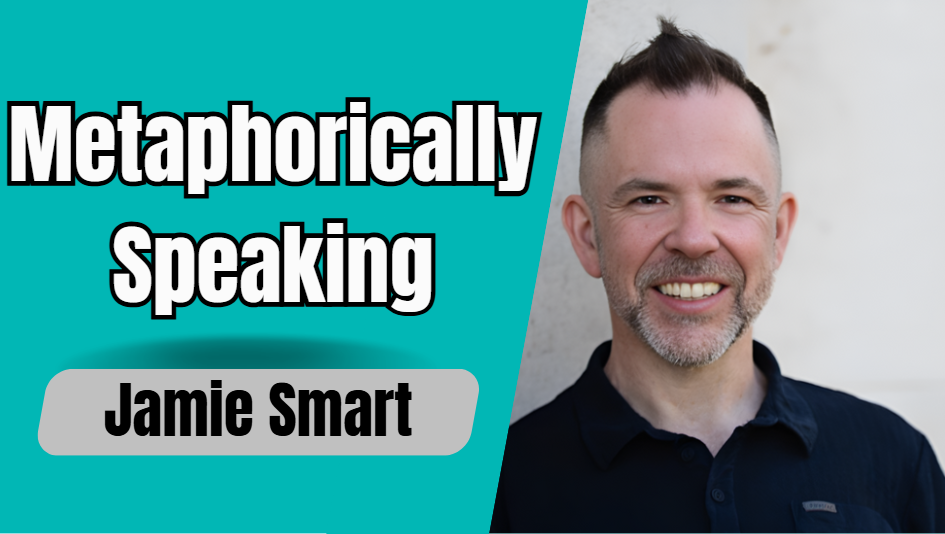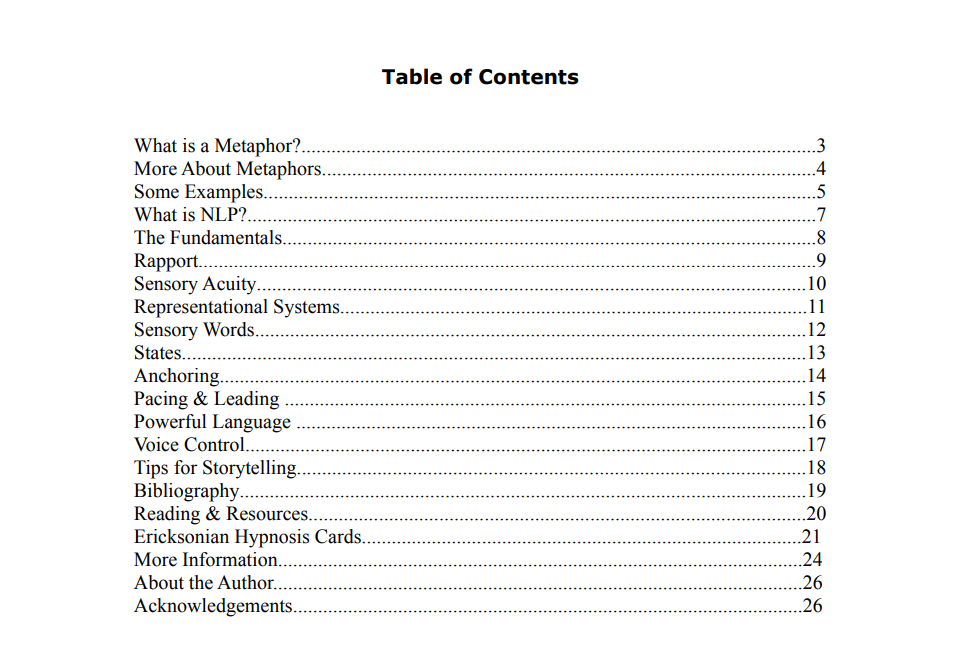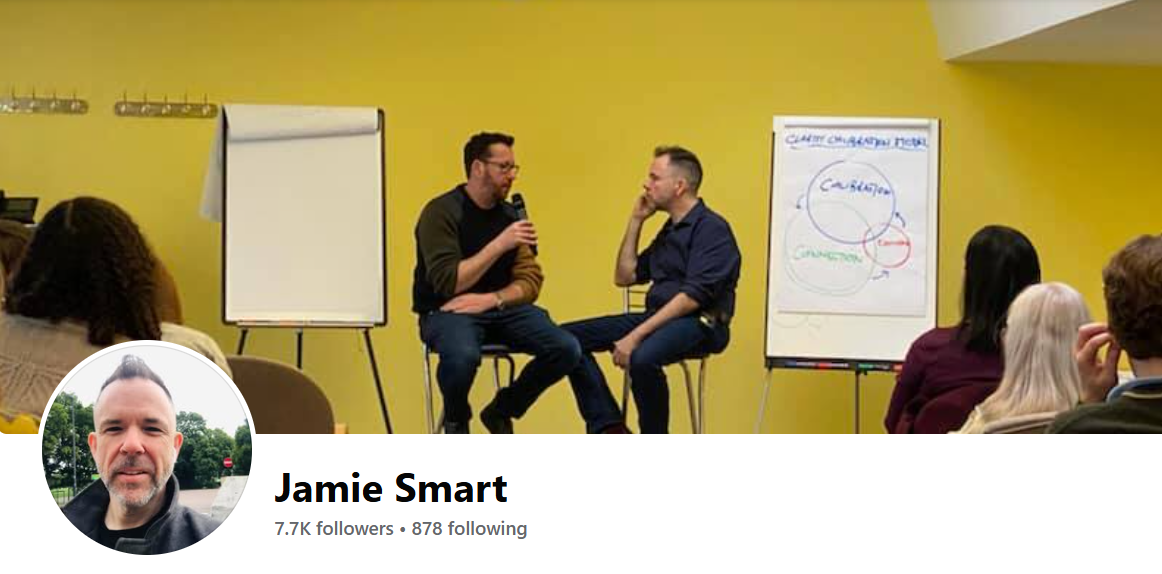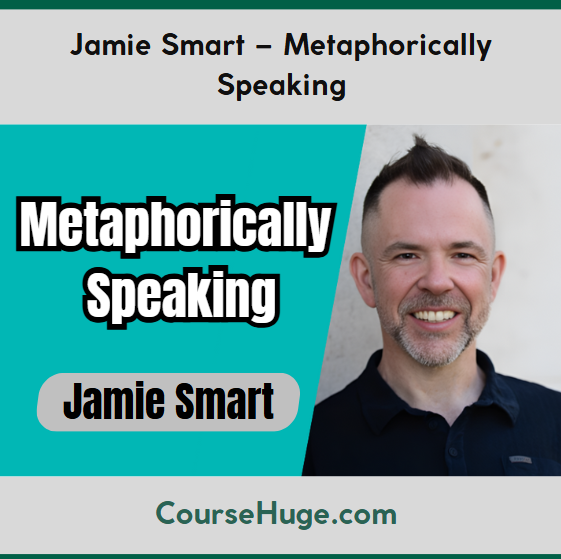Jamie Smart – Metaphorically Speaking
$97.00 Original price was: $97.00.$12.00Current price is: $12.00.
Jamie Smart Metaphorically Speaking Course [Instant Download]

1️⃣. What is Jamie Smart Metaphorically Speaking?
Jamie Smart’s Metaphorically Speaking is a communication program that teaches powerful communication using stories and comparisons.
This workshop recording shows you how to create stories that work directly with the deeper mind, helping you get past resistance and make real change.
Smart’s program gives you useful methods to grab attention, handle objections, and influence others in a good way. You’ll learn the same helpful tools used by top sellers, leaders, and healers.
The program helps you learn how to use stories and examples to make your talks more interesting and effective, whether you’re speaking to groups, clients, or in daily talks.
📚 PROOF OF COURSE



2️⃣. What you’ll learn in Metaphorically Speaking:
Jamie Smart’s Metaphorically Speaking shows you how to use the power of metaphors and stories to communicate and influence others. Here’s what you’ll learn:
- Unconscious influence techniques: Speak directly to the unconscious mind using metaphorical language patterns
- Storytelling frameworks: Create engaging stories that grab attention and bypass resistance
- Trance induction methods: Use carefully crafted metaphors to induce light hypnotic states in conversation
- Objection handling: Remove resistance without direct confrontation using subtle communication
- Covert changework: Help create healing and positive change through metaphorical approaches
- Rapport building: Build stronger connections with others using effective metaphors and stories
This program works for both beginners and experienced communicators. By the end, you’ll know how to use metaphors to persuade others and create meaningful change.
3️⃣. Metaphorically Speaking Course Curriculum:
✅ Section 1: Introduction to Metaphors
This part explains what metaphors are and why they’re powerful communication tools. Students learn how metaphors work by taking ideas from one thing and applying them to another, creating strong connections that go beyond logical thinking. The course starts by showing that metaphors include similes, stories, and other ways of telling things that create mental connections. Students learn how metaphors can be used for many things, from building trust to changing how people think and feel.
✅ Section 2: The Psychology of Metaphors
This section looks at how metaphors use the unconscious mind’s ability to make connections quickly and sometimes without people noticing. Students learn about how certain qualities get highlighted while others are ignored. Jamie Smart explains the difference between conscious and unconscious thinking, showing how metaphors speak to the intuitive part of the mind. Students learn about the “me too” response, where listeners automatically look for similar experiences in their own lives.
✅ Section 3: Metaphor Examples and Analysis
This hands-on part shows many examples of metaphors from famous people like Winston Churchill, Margaret Thatcher, JFK, Gandhi, and Martin Luther King Jr. Students see how these metaphors create strong mental pictures and feelings. The examples show different ways metaphors can be used, from political speeches to inspiring leadership, showing how metaphors can explain complex ideas in simple, memorable ways. Students get models they can use for their own speaking and writing.
✅ Section 4: NLP Fundamentals
This part introduces the basic ideas of NLP as a way to understand and use metaphorical communication. Students learn the four main principles: knowing what you want, getting attention through rapport, seeing if you’re making progress, and changing approach when needed. The section explains how NLP was created by Richard Bandler and John Grinder to capture and copy excellence in human communication. Students learn how to apply NLP in persuasion and influence.
✅ Section 5: Building Rapport
This important part teaches students how to create the foundation for effective communication through building rapport. Students learn how rapport works on many levels, from using similar language to matching breathing patterns. The course gives practical exercises for building rapport through matching and mirroring techniques, including body position, hand movements, voice qualities, and breathing. Students are encouraged to try these techniques in everyday conversations.
✅ Section 6: Sensory Acuity
This section focuses on developing better awareness of subtle body signals that show what’s happening in someone’s mind. Students learn to notice signs of different thinking patterns, from eye movements to changes in breathing and facial expressions. The part includes practical exercises for quieting your inner voice to improve observation skills. Students practice noticing different body signals each day, gradually building their ability to see things they missed before.
✅ Section 7: Representational Systems
This part explores how people process information through different senses (seeing, hearing, feeling, smelling, and tasting). Students learn to identify which senses someone prefers by listening to their words and watching their behavior. The course teaches specific words that show which sense someone is using, along with ways to match these patterns to build trust. Students discover how to use descriptions that appeal to multiple senses to create more engaging stories.
✅ Section 8: States and Anchoring
This practical section focuses on understanding emotional states and how they can be triggered and linked to stimuli. Students learn how problems and solutions are often connected to specific emotional states, making state management a useful tool for change. The part teaches anchoring techniques for capturing and recreating helpful states. Students practice setting and using anchors with different senses, discovering how to use naturally occurring anchors in everyday life.
✅ Section 9: Pacing and Leading
This strategic part teaches how to meet someone at their current reality before guiding them somewhere new. Students learn the pattern of pace-pace-pace-lead as a basic influence technique. The course shows how to move smoothly from statements that are clearly true to more suggestive ones, without creating resistance. Students learn to include pacing and leading naturally in their communication.
✅ Section 10: Powerful Language Patterns
This advanced part explores specific language patterns from Ericksonian hypnosis that speak directly to the unconscious mind. Students learn techniques including quotes, embedded commands, and marking out certain words to enhance persuasion. The section emphasizes the importance of voice control, teaching students to vary tone, pitch, speed, and other voice qualities for maximum impact. Special attention is given to the “command tone down” technique for delivering suggestions that are processed as commands.
✅ Section 11: Storytelling Mastery
This final teaching part provides practical tips for effective storytelling, stressing the importance of preparation, personal connection, sensory-rich language, and expressive delivery. Students learn to structure stories with clear beginnings, middles, and endings. The course encourages students to develop a collection of personal stories they can use in various situations, with specific communication goals in mind. Emphasis is placed on using detail, symbols, and emotional flow to fully engage listeners.
✅ Section 12: Resources and Further Study
The final section provides recommended readings and resources for continued learning in metaphor, storytelling, persuasion, and NLP. Students are introduced to Jamie Smart’s Ericksonian Hypnosis Cards and other tools for developing language pattern skills. The course ends with information about audio programs that demonstrate the principles in action, allowing students to hear the techniques being used in real conversations and training situations.
4️⃣. Who is Jamie Smart?

Jamie Smart is a clarity coach, bestselling author, and expert in transformational communication. He started his career seeking the best ways to create personal and professional change.
In the early 2000s, Smart founded Salad Ltd, which offers NLP and communication training. His knowledge of Ericksonian hypnosis and Neuro-Linguistic Programming made him a leader in transformational psychology.
Smart wrote the bestselling book “Clarity,” changing how people think about mindset and performance. He also wrote “Results: Think Less, Achieve More” and “The Little Book of Clarity.”
As a speaker and trainer, Smart has helped thousands of people worldwide improve their lives. His podcast “Get Clarity with Jamie Smart” shares insights on mindset transformation.
Smart is known for his work in communication, persuasion, and unconscious influence. He explains complex psychology in simple ways, making him highly sought-after in transformational education.
5️⃣. Who should take Jamie Smart’s course?
Metaphorically Speaking is for anyone who wants to improve their communication using stories and metaphors. The course is for:
- Communication professionals who need to explain complex ideas clearly using stories and metaphors.
- Coaches and therapists looking for tools to help clients change without creating resistance.
- Business leaders who want to inspire teams and share their vision using metaphorical language.
- Sales professionals wanting to handle objections and increase sales through better storytelling.
- Public speakers who aim to grab audience attention and make their messages stick with powerful metaphors.
This course teaches you how to use metaphors and stories in real situations to create change at the unconscious level. It helps you develop communication skills that influence people more deeply.
If you want to learn the language patterns that the world’s best communicators use, Metaphorically Speaking gives you the tools you need.
6️⃣. Frequently Asked Questions:
Q1: What is a metaphor in NLP?
Q2: How do stories influence the unconscious mind?
Q3: What makes covert communication different from regular talking?
Q4: Can NLP metaphor techniques help with sales?
Q5: How quickly can someone learn to use metaphors for influence?
Be the first to review “Jamie Smart – Metaphorically Speaking” Cancel reply
Related products
NLP & Hypnosis
Best 100 Collection
NLP & Hypnosis
Stephen Gilligan – Trance and The Transformation of Identity
NLP & Hypnosis
NLP & Hypnosis
NLP & Hypnosis
NLP & Hypnosis
NLP & Hypnosis












Reviews
There are no reviews yet.